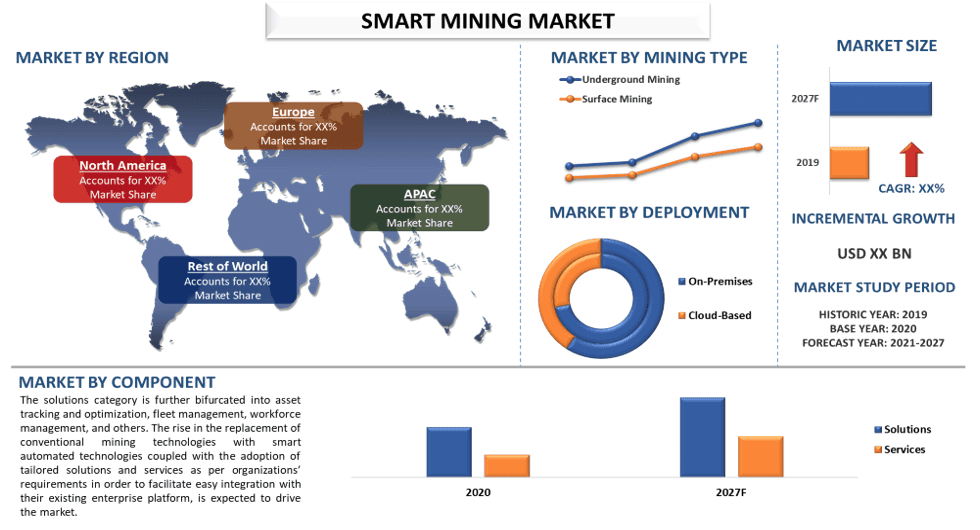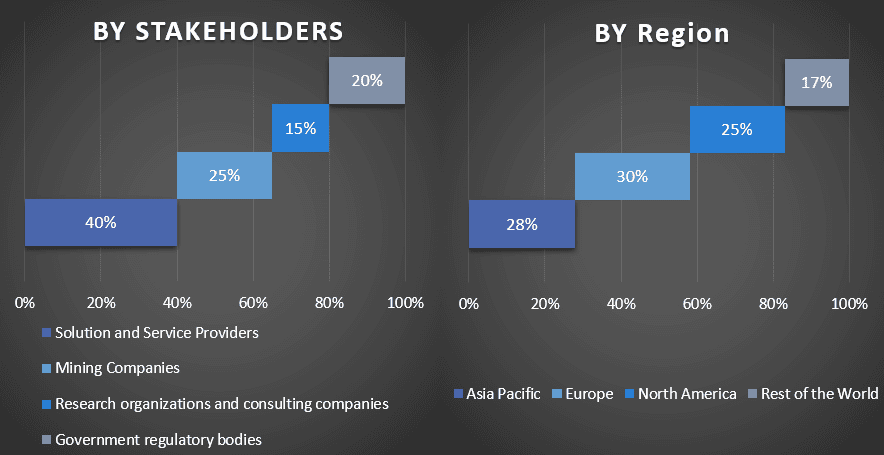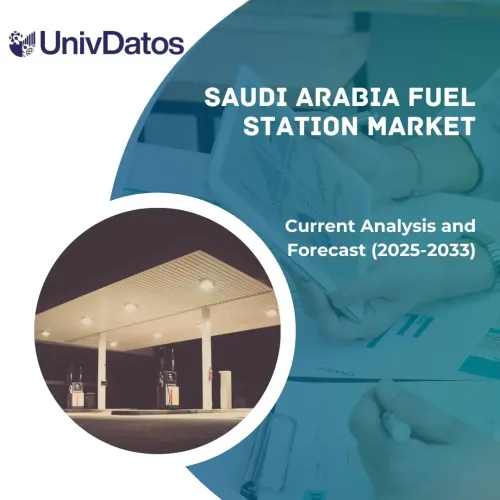
스마트 광업은 정보, 자율성 및 기술을 사용하여 향상된 안전을 확보하고 운영 비용을 절감하며 광산 현장의 생산성을 향상시키는 프로세스입니다. 광업 기업은 최첨단 소프트웨어 및 솔루션을 제공하여 생산성 향상에 중점을 둡니다. 이러한 솔루션은 에너지 기업의 운영 효율성 요구 사항을 충족하기 위해 기계와 지능형 데이터의 융합을 달성하는 데 크게 목표를 두고 있습니다. 또한 연결된 솔루션은 효과적인 도구 및 방법론을 사용하여 시장 위협 및 취약성을 줄임으로써 분석 기반 의사 결정을 개선합니다. 이로 인해 전 세계 광산 운영자가 스마트 광업 솔루션 채택을 늘리고 있습니다. 또한 신세대 광업 회사는 IoT 센서 및 장치에서 생성된 데이터에 대한 분석을 실행합니다. 이는 비용 절감, 생산성 향상 및 안전 개선을 위한 노력에 도움이 됩니다. IoT는 많은 광업 기업이 직면한 일부 안전 및 생산 문제를 극복하기 위해 광업 산업에서 사용되고 있습니다.
글로벌 스마트 광업 시장은 2021-2027년 동안 약 15%의 CAGR을 기록할 것으로 예상됩니다. 이는 주로 광산 운영자가 비용 및 생산성 최적화를 달성하고, 안전 조치를 개선하고, 사물 인터넷(IoT)을 통합하여 인공 지능 요구 사항을 개발하는 데 점점 더 중점을 두기 때문입니다.
Cisco Systems Inc., International Business Machines (IBM) Corporation, Accenture plc, Caterpillar Inc., ABB Ltd., SAP SE, Schneider Electric SE, Komatsu Ltd., Hexagon AB 및 Rockwell Automation Inc.는 시장의 주요 업체 중 일부입니다. 고객에게 첨단 혁신적인 제품/기술을 제공하기 위해 이러한 업체들이 파트너십과 함께 여러 M&A를 수행했습니다.
보고서에 제시된 인사이트
“구성 요소 중에서 솔루션 범주가 2020년 시장에서 가장 큰 점유율을 차지했습니다.”
구성 요소를 기준으로 시장은 솔루션과 서비스로 분류됩니다. 구성 요소 중에서 솔루션 범주가 시장에서 상당한 점유율을 차지했습니다. 이는 주로 주요 업체들의 업계 지속적인 개발과 광업의 다양한 프로세스를 간소화하기 위한 새로운 솔루션 및 서비스 출시 때문입니다. 예를 들어, 2021년 11월 Hexagon은 광산의 모든 부분을 연결하는 통합 기술 플랫폼 및 파트너십인 Power of One을 소개했습니다. Power of One은 갱도에서 공장까지 광산의 모든 프로세스를 연결하는 Hexagon의 솔루션 세트입니다. 이는 현장에서 클라우드까지 액세스할 수 있는 지능형 모니터링 시스템을 통해 모든 센서와 소프트웨어를 연결하는 플랫폼을 통해 이루어집니다. 또한 자산 추적 솔루션과 같은 솔루션은 광업 자산을 추적하고 광업 환경의 품질과 안전을 지속적으로 모니터링합니다. 따라서 광부의 효율성, 생산성 및 안전을 보장합니다. 여기에는 GPS 위치, 엔진 시간 및 지오펜스를 포함하여 실시간으로 광업 차량을 추적하는 것이 주로 포함됩니다.
“광업 유형 중에서 지하 광업은 예측 기간 동안 가장 높은 CAGR을 기록할 것으로 예상됩니다.”
광업 유형을 기준으로 시장은 지하 광업과 지표 광업으로 분류됩니다. 이 중에서 지하 광업은 예측 기간 동안 가장 높은 CAGR을 기록할 것으로 예상됩니다. 스마트 광업 솔루션은 실시간 위치 시스템(RTLS), RFID 추적, Wi-Fi, 센서, 모바일 장치, 소프트웨어 및 기타 기술을 사용하여 비용을 절감하면서 지하 광업 자산을 추적하는 데 사용되어 지하 광업 운영에 대한 완전한 가시성을 확보합니다. 이 솔루션은 광부 추적, 출입구 및 대피 상태 모니터링, 경고 수신을 통해 작업자 안전을 개선합니다. 또한 고급 IoT 시스템과 디지털화를 사용하여 새로운 광산이 개발되고 있습니다. 예를 들어, 말리에 위치한 Syama 지하 금광은 Resolute Mining이 건설한 세계 최초의 완전 자동화 금광입니다. 지하 프로젝트는 자동화 프로세스의 일부로 설치된 광섬유 네트워크로 구성됩니다. Resolute는 SES Networks의 광섬유와 유사한 서비스를 통해 광섬유 네트워크를 클라우드 데이터에 연결했습니다. 완전 자동화된 지하 광산은 자동화된 차량과 함께 AutoMine 및 OptiMine 자동화 제어 시스템을 사용합니다.
“배포 중에서 클라우드 기반 배포는 예측 기간 동안 더 빠른 성장률을 보일 것입니다.”
배포를 기준으로 시장은 온프레미스와 클라우드 기반으로 분류됩니다. 2020년에는 예측 기간 동안 클라우드 배포 모드가 시장 성장을 주도할 것으로 예상됩니다. 클라우드 컴퓨팅은 확장성, 속도, 24×7 서비스, 향상된 IT 보안 및 운영 효율성과 같은 이점을 제공하는 오늘날 가장 효과적인 기술 중 하나입니다. 또한 비용 절감, 비즈니스 생산성 향상 및 광업 관행 변화를 위한 시스템 및 데이터의 디지털화 증가는 광업 운영에 관련된 주요 이해 관계자의 전 세계 액세스를 보장하는 클라우드 기반 솔루션의 채택을 더욱 촉진하고 있습니다. 광업 산업은 디지털 전환과 관련하여 고유한 과제를 안고 있지만 클라우드 기술과 광업 IoT의 채택은 산업을 보다 지속 가능하고 생산적으로 만드는 길로 인도할 것입니다. 클라우드 컴퓨팅은 광업 운영 연결 및 모니터링, 데이터 기반 실시간 의사 결정, 실제 세계에서 구현되기 전에 가상 세계에서 시나리오 시뮬레이션을 제공하여 광업 IoT를 위한 핵심 지원 요소입니다. 따라서 클라우드 범주는 예측 기간 동안 상당한 성장을 보일 것입니다.
“APAC은 예측 기간 동안 상당한 성장을 보일 것입니다.”
아시아 태평양은 스마트 광업 시장에서 가장 높은 CAGR 성장을 보일 것으로 예상됩니다. 이 시장 성장에 대한 주요 기여자는 중국, 인도 및 호주입니다. 신흥 경제국의 인프라 개발 증가와 광업 운영 확장이 APAC 시장 성장에 기여했습니다. 아시아 태평양은 석탄 광업 시장 중 가장 큰 시장으로, 약 75%가 이 지역 내에서 이루어지고 있습니다. 중국, 호주 및 인도는 발전 및 철강 생산과 같은 많은 필수 활동에 사용되는 석탄 생산의 글로벌 리더입니다. 따라서 이 지역에서는 높은 광업 활동이 필요하며 이는 이 지역의 스마트 광업 솔루션 및 서비스에 대한 수요를 견인합니다. 또한 인도 및 중국과 같은 이 지역의 개발 도상국에서 광산 탐사 지역이 증가함에 따라 시장이 더욱 확대될 것으로 예상됩니다. 예를 들어, ABB는 새로운 국가 광물 정책 2019 발표에 따라 광산에서 인도 정부의 디지털화 움직임을 강화하기 위해 모든 전력화, 자동화 및 디지털 제품을 연결하는 ABB Ability MineOptimize를 출시했습니다. 회사에 따르면 ABB Ability MineOptimize 포트폴리오는 타의 추종을 불허하는 운영, 유지 관리, 프로세스 및 생산 성능을 위해 개방적이고 디지털 방식으로 연결된 광업 애플리케이션을 제공합니다.
이 보고서를 구매해야 하는 이유:
- 이 연구에는 인증된 주요 업계 전문가가 검증한 시장 규모 측정 및 예측 분석이 포함되어 있습니다.
- 이 보고서는 전체 산업 성과에 대한 빠른 검토를 한눈에 제공합니다.
- 이 보고서는 주요 비즈니스 재무, 제품 포트폴리오, 확장 전략 및 최근 개발에 중점을 두고 주요 업계 동료에 대한 심층 분석을 다룹니다.
- 업계에 만연한 동인, 제약, 주요 동향 및 기회에 대한 자세한 조사.
- 이 연구는 다양한 세그먼트에 걸쳐 시장을 포괄적으로 다룹니다.
- 산업에 대한 심층적인 지역 수준 분석.
맞춤 설정 옵션:
글로벌 스마트 광업 시장은 요구 사항 또는 기타 시장 세그먼트에 따라 추가로 맞춤 설정할 수 있습니다. 이 외에도 UMI는 귀하가 고유한 비즈니스 요구 사항을 가지고 있음을 이해하므로 귀하의 요구 사항에 완벽하게 맞는 보고서를 얻으려면 언제든지 저희에게 연락하십시오.
목차
글로벌 스마트 광업 시장 분석을 위한 연구 방법론 (2021-2027)
글로벌 스마트 광업 시장의 과거 시장 분석, 현재 시장 추정, 미래 시장 예측은 전 세계 주요 지역에서 스마트 광업 도입을 분석하고 창출하기 위해 수행된 세 가지 주요 단계였습니다. 과거 시장 수치를 수집하고 현재 시장 규모를 추정하기 위해 철저한 2차 조사가 수행되었습니다. 둘째, 이러한 통찰력을 검증하기 위해 수많은 조사 결과와 가정이 고려되었습니다. 또한, 글로벌 스마트 광업 시장의 가치 사슬 전반에 걸쳐 업계 전문가와 함께 철저한 1차 인터뷰도 진행되었습니다. 1차 인터뷰를 통해 시장 수치를 가정하고 검증한 후, 전체 시장 규모를 예측하기 위해 상향식/하향식 접근 방식을 사용했습니다. 그 후, 시장 세분화 및 데이터 삼각 측량 방법을 채택하여 산업과 관련된 세그먼트 및 하위 세그먼트의 시장 규모를 추정하고 분석했습니다. 자세한 방법론은 아래에 설명되어 있습니다.
과거 시장 규모 분석
1단계: 2차 자료 심층 연구:
연례 보고서 및 재무 제표, 실적 발표, 보도 자료 등과 같은 회사 내부 자료와 저널, 뉴스 및 기사, 정부 간행물, 경쟁사 간행물, 부문 보고서, 타사 데이터베이스 및 기타 신뢰할 수 있는 간행물을 포함한 외부 자료를 통해 스마트 광업 시장의 과거 시장 규모를 얻기 위해 자세한 2차 연구가 수행되었습니다.
2단계: 시장 세분화:
스마트 광업 시장의 과거 시장 규모를 확보한 후, 주요 지역의 다양한 세그먼트 및 하위 세그먼트에 대한 과거 시장 통찰력과 점유율을 수집하기 위해 자세한 2차 분석을 수행했습니다. 보고서에 포함된 주요 세그먼트는 구성 요소, 광업 유형, 배포입니다. 또한 해당 지역의 테스트 모델의 전체적인 도입을 평가하기 위해 국가별 분석이 수행되었습니다.
3단계: 요인 분석:
다양한 세그먼트 및 하위 세그먼트의 과거 시장 규모를 확보한 후, 스마트 광업 시장의 현재 시장 규모를 추정하기 위해 자세한 요인 분석을 수행했습니다. 또한 다양한 구성 요소, 광업 유형 및 스마트 광업 배포와 같은 종속 및 독립 변수를 사용하여 요인 분석을 수행했습니다. 전 세계 스마트 광업 시장 부문에서 최고의 파트너십, 합병 및 인수, 사업 확장 및 제품 출시를 고려하여 수요 및 공급 측면 시나리오에 대한 철저한 분석이 수행되었습니다.
현재 시장 규모 추정 및 예측
현재 시장 규모 산정: 위의 3단계에서 얻은 실행 가능한 통찰력을 바탕으로 현재 시장 규모, 글로벌 스마트 광업 시장의 주요 업체 및 세그먼트의 시장 점유율에 도달했습니다. 필요한 모든 백분율 점유율 분할 및 시장 세분화는 위에서 언급한 2차 접근 방식을 사용하여 결정되었으며 1차 인터뷰를 통해 검증되었습니다.
추정 및 예측: 시장 추정 및 예측을 위해 이해 관계자가 사용할 수 있는 동인 및 추세, 제약 및 기회를 포함한 다양한 요인에 가중치가 할당되었습니다. 이러한 요인을 분석한 후, 관련 예측 기술, 즉 상향식/하향식 접근 방식을 적용하여 전 세계 주요 시장에서 다양한 세그먼트 및 하위 세그먼트에 대한 2027년 시장 예측에 도달했습니다. 시장 규모를 추정하기 위해 채택된 연구 방법론은 다음과 같습니다.
- 수익(USD) 측면에서 업계의 시장 규모와 국내 주요 시장에서 스마트 광업 시장의 도입률
- 시장 세그먼트 및 하위 세그먼트의 모든 백분율 점유율, 분할 및 세분화
- 제공되는 솔루션 측면에서 글로벌 스마트 광업 시장의 주요 업체. 또한 빠르게 성장하는 시장에서 경쟁하기 위해 이러한 업체가 채택한 성장 전략
시장 규모 및 점유율 검증
1차 연구: 주요 지역에서 최고 경영진(CXO/VP, 영업 책임자, 마케팅 책임자, 운영 책임자 및 지역 책임자, 국가 책임자 등)을 포함한 핵심 의견 리더(KOL)와 심층 인터뷰를 수행했습니다. 그런 다음 1차 연구 결과를 요약하고 명시된 가설을 입증하기 위해 통계 분석을 수행했습니다. 1차 연구의 입력은 2차 연구 결과와 통합되어 정보를 실행 가능한 통찰력으로 전환했습니다.
다양한 지역의 1차 참가자 분할

시장 엔지니어링
데이터 삼각 측량 기술을 사용하여 전체 시장 추정을 완료하고 글로벌 스마트 광업 시장의 각 세그먼트 및 하위 세그먼트의 정확한 통계 수치에 도달했습니다. 데이터는 글로벌 스마트 광업 시장에서 구성 요소, 광업 유형 및 배포 영역의 다양한 매개변수와 추세를 연구한 후 여러 세그먼트 및 하위 세그먼트로 분할되었습니다.
글로벌 스마트 광업 시장 연구의 주요 목표
글로벌 스마트 광업 시장의 현재 및 미래 시장 동향이 연구에서 정확히 지적되었습니다. 투자자는 연구에서 수행된 질적 및 양적 분석을 통해 투자에 대한 재량을 기준으로 전략적 통찰력을 얻을 수 있습니다. 현재 및 미래 시장 동향은 지역 수준에서 시장의 전반적인 매력을 결정하여 산업 참가자가 미개척 시장을 활용하여 선점자 이점으로 이익을 얻을 수 있는 플랫폼을 제공했습니다. 연구의 다른 양적 목표는 다음과 같습니다.
- 가치(USD) 측면에서 스마트 광업 시장의 현재 및 예측 시장 규모를 분석합니다. 또한 다양한 세그먼트 및 하위 세그먼트의 현재 및 예측 시장 규모를 분석합니다.
- 연구의 세그먼트에는 구성 요소, 광업 유형 및 배포 영역이 포함됩니다.
- 스마트 광업 시장 산업에 대한 규제 프레임워크를 정의하고 분석합니다.
- 다양한 중개인의 존재와 관련된 가치 사슬을 분석하고 업계의 고객 및 경쟁업체 행동을 분석합니다.
- 주요 지역에 대한 스마트 광업 시장의 현재 및 예측 시장 규모를 분석합니다.
- 보고서에서 연구된 지역의 주요 국가에는 아시아 태평양, 유럽, 북미 및 기타 지역이 포함됩니다.
- 스마트 광업 시장의 회사 프로필과 빠르게 성장하는 시장에서 지속하기 위해 시장 참여자가 채택한 성장 전략
- 업계에 대한 심층적인 지역 수준 분석
관련 보고서
이 상품을 구매한 고객님들도 함께 구매하신 상품










